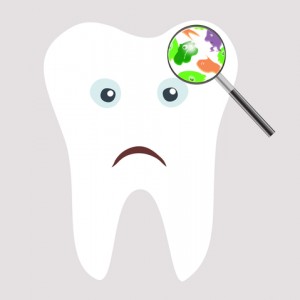 Infection control within the dental practice involves two basic factors: preventing the transmission of dangerous microorganisms from patient and team members and killing the microorganisms from surfaces and dental instruments. Read on for more important facts on how proper infection control is achieved.
Infection control within the dental practice involves two basic factors: preventing the transmission of dangerous microorganisms from patient and team members and killing the microorganisms from surfaces and dental instruments. Read on for more important facts on how proper infection control is achieved.
Hand Washing: Dentists, hygienists, dental assistants, and sterilization technicians regularly come into contact with bacteria and other pathogens that can easily be transferred through contact with blood and saliva, making hand washing between patients a must. For best results, a good lather should be worked up with an antibacterial soap for at least 20 minutes, before rinsing.
Surface Disinfecting: Prior to a dental patient entering the examination room, all surfaces, such as the dental chair, instrument tray, dental light, suction hoses, cuspidors, counter tops, drawer handles, sinks, dental goggles, and x-ray equipment should be thoroughly cleaned and decontaminated. For extra protection, some offices will cover select areas of equipment, such as dental light handles and switches, with disposable coverings.
Disposable Items: All dental offices adhere to strict sterilization and waste removal procedures which are carefully outlined by the American Dental Association (ADA) and the Centers for Disease Control (CDC). Saliva ejectors and needles cannot be reused, and are to be discarded in special containers.
Masks: Surgical masks are to be worn by the dental staff during all procedures in order to prevent the transmission of bacteria from their mouths’ to the patient’s mouth. These masks are disposable and are often made of thin, flexible paper or synthetic fibers that are only stable for 1 to 2 hours. This is because moisture from the mouth and nose will eventually soak through the mask, rendering it useless in terms of infection control. Once this happens, the mask should be changed immediately, before continuing on with the dental procedure.
Gloves: Disposable gloves must fit well and be changed after each patient, after hand washing. In some instances, gloves may need to be changed several times during a procedure, such as with a root canal, which requires that many x-rays be taken and developed in a separate room.
Dental Instruments: Many dental patients wonder what happens to metal dental instruments after they leave the mouth and are taken away to the sterilization room. All reusable mouth instruments, such as mouth mirrors, explorers, spoon excavators, and scaling instruments are carefully removed from the dirty tray and placed into an ultrasonic cleaning device which uses water and a special bubbling cleaning agent to remove dried saliva and blood droplets from all instruments. After the timer goes off on the ultrasonic cleaning machine, the instruments are washed off with water, patted dry, separated, and then placed inside disposable indicator bags or reusable locking containers. Once the instruments are properly packaged, they are commonly placed inside a steam autoclave machine which sterilizes instruments at with extreme heat, ensuring that all bacteria and pathogens are killed.
Uniforms: Scrubs and lab coats are too be changed each day and laundered either through a professional laundering service or at the dental worker’s home.
Eye Protection: All dental team members are required to wear either protective goggles or a face mask to prevent the eyes from being exposed to bacteria or pathogens from tiny droplets that splash in the air through the use of high-speed hand drills and other dental devices.
Dental patients and team members are vulnerable to the exposure of blood and other respiratory secretions. By carefully following all of the recommended guidelines for infection control, the transmission of dangerous diseases can and will be prevented.